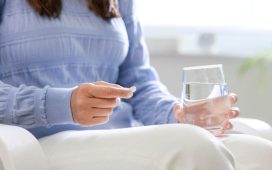People with a high number of antiseizure medications seem to be at risk for accelerated neuroaxonal loss
By Lori Solomon HealthDay Reporter
THURSDAY, Oct. 17, 2024 (HealthDay News) — In people with epilepsy, progression of retinal neuroaxonal loss is detectable at short-term follow-up, according to a study published online Oct. 9 in Epilepsia.
Livia Stauner, from LMU University Hospital in Germany, and colleagues examined the longitudinal dynamics of retinal neuroaxonal loss and possible driving factors in 44 people with epilepsy versus 56 healthy controls (aged 18 to 55 years) who underwent spectral domain optical coherence tomography.
The researchers found a significant decrease in the peripapillary retinal nerve fiber layer (pRNFL), macular RNFL, ganglion cell inner plexiform layer (GCIP), and total macular volume thickness or volume over 7.0 months in people with epilepsy. The annualized percentage change of the pRNFL (−0.98/year) and the GCIP (−1.24/year) were significantly more pronounced in people with epilepsy versus controls. Atrophy of the macular RNFL was significantly influenced by the number of antiseizure medications and increasing age of people with epilepsy. However, contradictory results were seen for the impact of seizures.
“People with epilepsy who receive a high number of antiseizure medications seem to be at risk for accelerated neuroaxonal loss, stressing the importance of well-considered and effective antiseizure therapy,” write the authors.
Several authors disclosed ties to relevant organizations.
Abstract/Full Text (subscription or payment may be required)
Copyright © 2024 HealthDay. All rights reserved.








